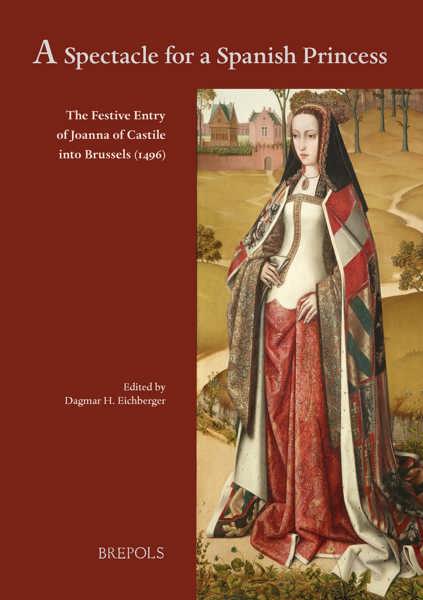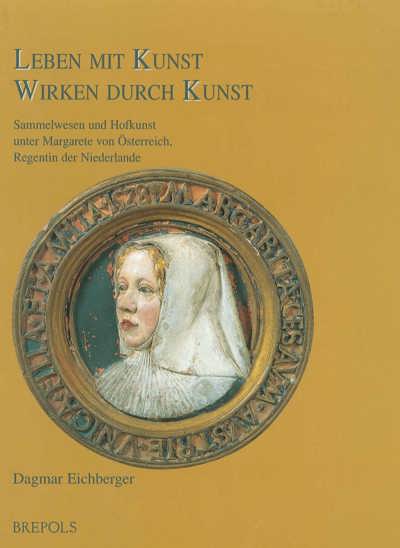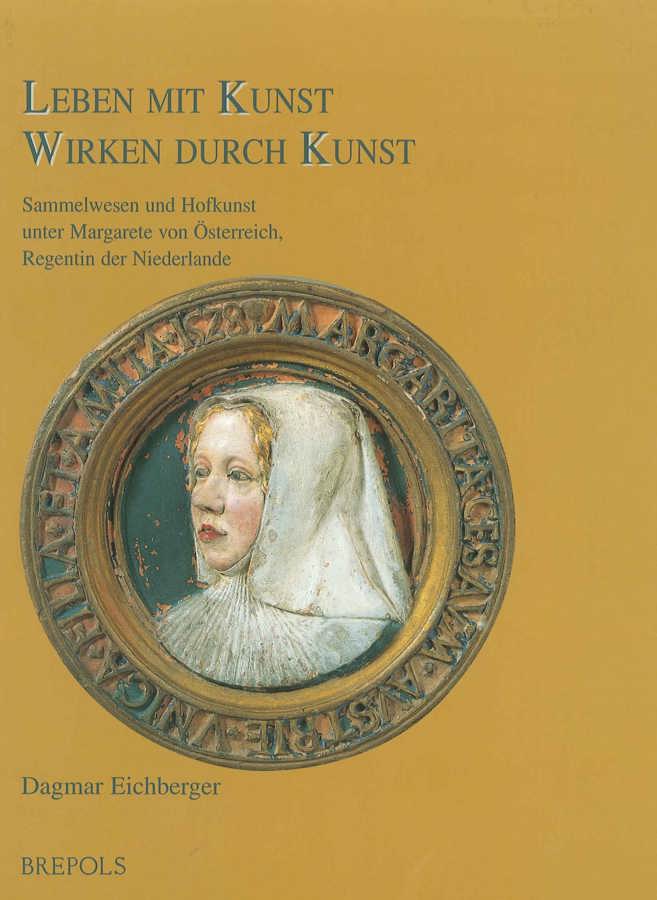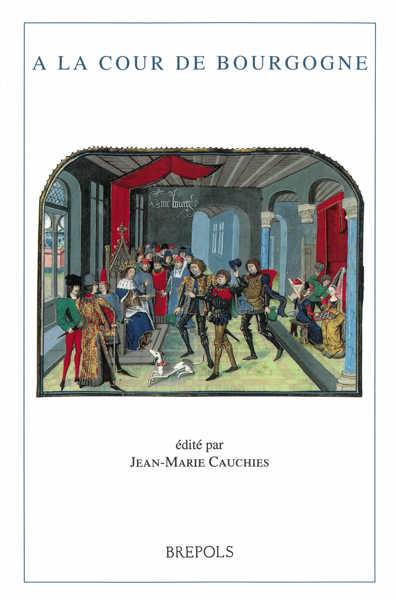
Leben mit Kunst - Wirken durch Kunst. Sammelwesen und Hofkunst unter Margarete von Österreich, Regentin der Niederlande
D. Eichberger
- Pages: 527 p.
- Size:180 x 250 mm
- Illustrations:139 b/w, 12 col.
- Language(s):German
- Publication Year:2002
- € 100,00 EXCL. VAT RETAIL PRICE
- ISBN: 978-2-503-99129-0
- Hardback
- Available
- € 100,00 EXCL. VAT RETAIL PRICE
- ISBN: 978-2-503-55687-1
- E-book
- Available
This study aims at reconstructing the courtly environment in which art was collected, studied and displayed during the first half of the sixteenth century, using the court of Margaret of Austria in Mechelen as a case study.
"Schon länger, wenngleich alzu pauschal, war in der Kunstgeschichtlichen Literatur die herausragende Bedeutung der Sammlungstätigkeit Margaretes erkannt worden. Eichberger liefert nun erstmalig eine ebenso umfassende wie detaillierte Darstellung, die das in dem Fall ausserordentlich üppig vorhandene Quellenmaterial konsequent ausschöpft." (Sigrid Ruby, Humanities, Sozial- und Kulturgeschichte, Mai 2003)
"Die Darstellung von Dagmar Eichberger überzeugt durch umsichtige Recherche, sorgfältige Analyse und stringende Argumentation." (Sigrid Ruby, Humanities, Sozial- und Kulturgeschichte, Mai 2003)
"Dagmar Eichberger's seminal study on Margaret of Austria, regent of the Low Countries (1507 - 1530), as a collector, has set a new standard in the study of Netherlandish court art of the Early Modern Period." (Krista De Jonge, www.hnanews.org/archive/2004)
"(...) Dagmar Eichberger's work should be required reading for all historians interested in the subject" (Krista De Jonge, www.hnanews.org/archive/2004)
"It seems likely that Eichberger's study of Margaret of Austria will become the standard reference work on the topic for the foreseeable future." (P.G. Matthews in The Burlington Magazine CXLVI, January 2004)
"Die Darstellung von Dagmar Eichberger überzeugt durch umsichtige Recherce, sorgfältige Analyse und stringente Argumentation." (S. Ruby in Humanities, Sozial-& Kulturgeschichte, 2003)
"Schon länger, wenngleich alzu pauschal, war in der Kunstgeschichtlichen Literatur die herausragende Bedeutung der Sammlungstätigkeit Margaretes erkannt worden. Eichberger liefert nun erstmalig eine ebenso umfassende wie detaillierte Darstellung, die das in dem Fall ausserordentlich üppig vorhandene Quellenmaterial konsequent ausschöpft." (Sigrid Ruby, Humanities, Sozial- und Kulturgeschichte, Mai 2003)
"Dagmar Eichberger's seminal study on Margaret of Austria, regent of the Low Countries (1507 - 1530), as a collector, has set a new standard in the study of Netherlandish court art of the Early Modern Period." (Krista De Jonge, www.hnanews.org/archive/2004)
"(...) Dagmar Eichberger's work should be required reading for all historians interested in the subject" (Krista De Jonge, www.hnanews.org/archive/2004)
"Without doubt, Eichberger's book has rewritten the history of early-modern collecting and will help shape the terms of future research in the field." (M. Meadow in Sehepunkte, 3 (2003), nr. 10, 15.10.2003)
‘The author has been successful in producing a substantial monograph on one such collection, that of Margaret of Austria, which can only be qualified as an exemplary work of scholarship." (Mason, Peter, in : Journal of the History of Collections, 18, 2006)
This study aims at reconstructing the courtly environment in which art was collected, studied and displayed during the first half of the sixteenth century. Much research has been undertaken to date on Netherlandish art and culture, however, little attention has been paid to the ways in which artefacts were arranged within noble residences. Where were paintings such as Jan van Eyck's Arnolfini Wedding and Jan Gossaert's Salamacis and Hermaphrodite kept? What can the reconstruction of the original location contribute to our understanding of such important works of art? The court of Margaret of Austria (1480-1530) in Mechelen is used as a case study for this new approach which combines the methods of art history, history and museum studies. Given the wealth of documentary evidence, including inventories, civic records, court accounts, ordinances, etc., it is possible to bring to life Margaret of Austria's encyclopaedic collection and to reconstruct the residence in which she lived and held court for more than twenty years. The regent owned an outstanding array of artefacts: Netherlandish art from the fifteenth and sixteenth centuries as well as Italian, Spanish, German and French paintings, sculptures and decorative art objects. By determining the original functions of the regent's personal chambers and cabinets, new light is shed on the context in which her collection was presented to visitors and high-ranking courtiers. In addition to her apartment on the first floor, Margaret set up a new collection cabinet on the ground floor. In this room, close to her palace garden, Margaret of Austria put on display a wide range of objects including Naturalia, Exotica, technical instruments and works of art. The so-called 'coral cabinet' is one of the first genuine display spaces north of the Alps which is well documented.
Unser Wissen über burgundisch-niederländische Kultur ist im Laufe der letzten Jahrzehnte beträchtlich gewachsen. Dennoch ist bisher zu wenig über das räumliche Umfeld bekannt, in dem die Gemälde eines Jan van Eyck, Hieronymus Bosch oder Jan Gossaert aufgestellt und betrachtet wurden. Die hier vorliegende Studie hat es sich zum Ziel gemacht, das höfische Milieu zu rekonstruieren, in dem Kunstwerke und andere Wertgegenstände gesammelt und in Szene gesetzt wurden. Aus dem Blickwinkel neuzeitlicher Sammlungsgeschichte betrachtet, wird der Mechelner Hof der Margarete von Österreich (1480-1530) als Fallstudie analysiert. Margarete, eine weitgereiste Mäzenin und Sammlerin, hatte sich in den Niederlanden eine stattliche Residenz eingerichtet, die sie mit einer Vielzahl von Artefakten ausstattete. Ihre persönliche Sammlung bestand aus frühniederländischen Kunstwerken ersten Ranges, wie etwa Jan van Eycks Arnolfini Hochzeit oder Michel Sittows Diptychon mit der Himmelfahrt Mariens. Bernard van Orley, Jan Gossaert, Joos van Cleve, Jan Vermeyen und Gerard Horenbout repräsentieren die zeitgenössische Kunst aus dem Herrschaftsgebiet der Regentin. Darüber hinaus besaß Margarete zahlreiche italienische, spanische, deutsche und französische Objekte des 15. und 16. Jahrhunderts. Die überaus reiche Quellenlage hat es möglich gemacht, den ursprünglichen Wohnbereich und die Anlage des sogenannten "Hofs von Savoyen" zu rekonstruieren und damit die Funktion der einzelnen Räumlichkeiten näher zu bestimmen. Zusätzlich zu den eigentlichen Wohnräumen und der Bibliothek richtete die weltoffene Regentin einen autonomen Sammlungsraum in Gartennähe ein. In diesem Kontext wird Kunst nicht mehr ausschließlich für dynastische und religiöse Zwecke eingesetzt, sondern erhält einen neuen Stellenwert. Sobald Kunstgegenstände auch nach ästhetischen Kriterien beurteilt werden, können sie in einen neuen Sinnzusammenhang gestellt werden wie es in Mechelen der Fall war.




